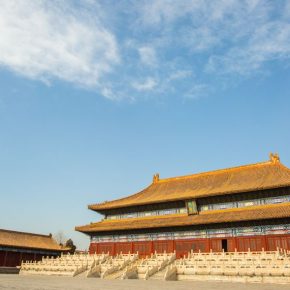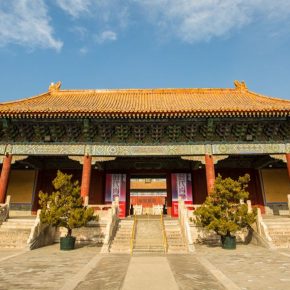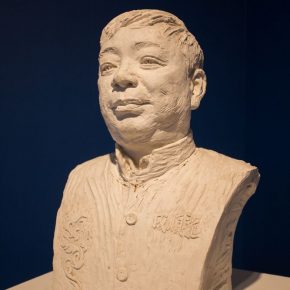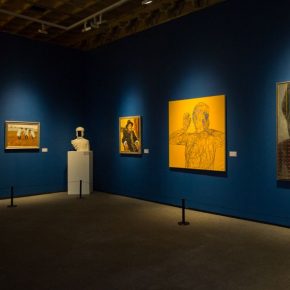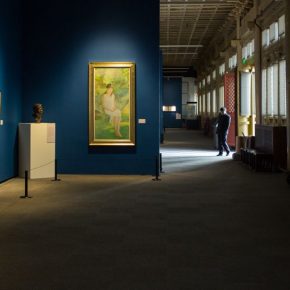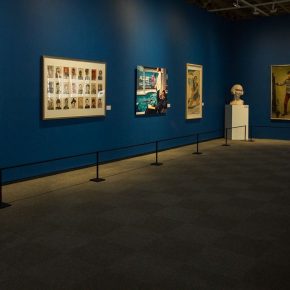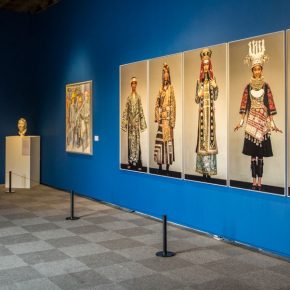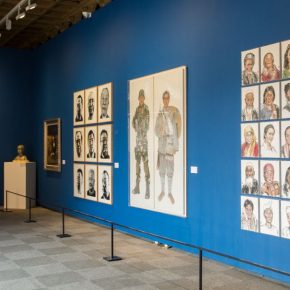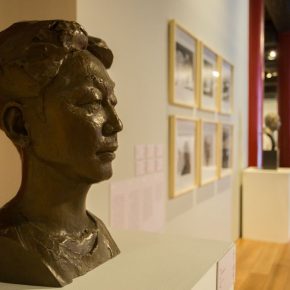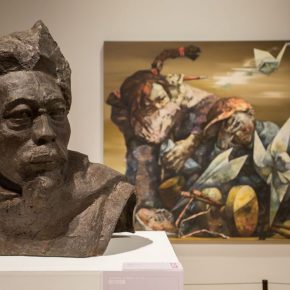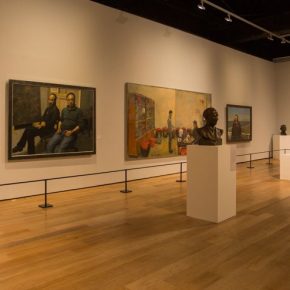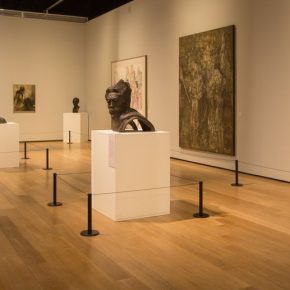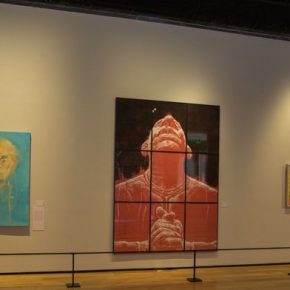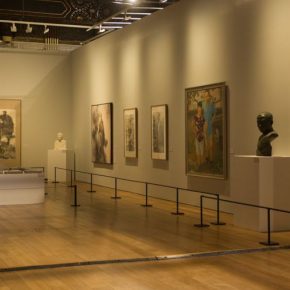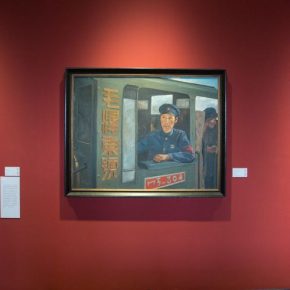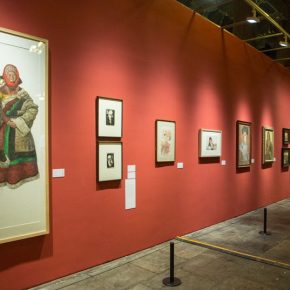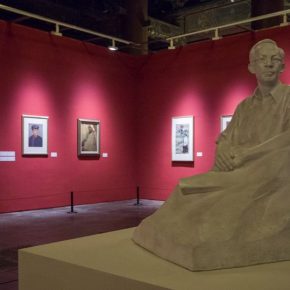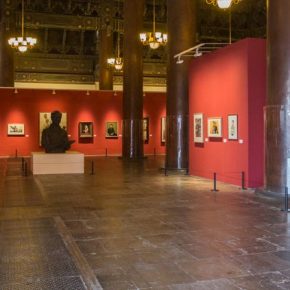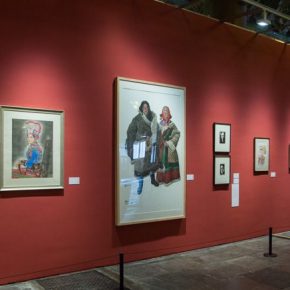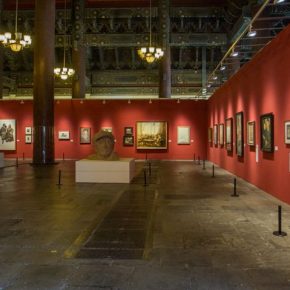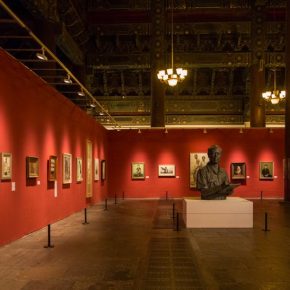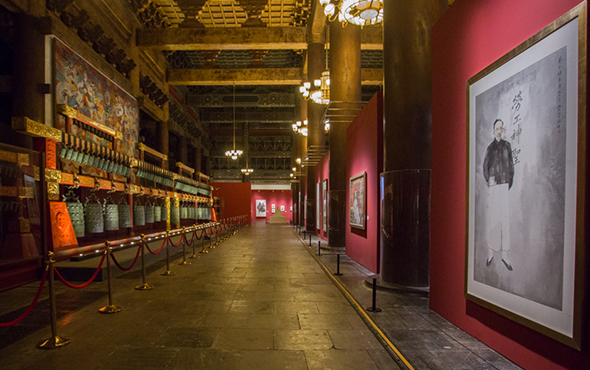
The creation of portraits has always been the most important topic of artistic expression. From ancient tomb murals, emperors, religious followers, scholars & hermits to contemporary diversified portraits, “portraits” has born a moral etiquette, morality & etiquette, aesthetic orientation, cultural representation and social themes, of an historical era. When we view a portrait, it is not only a matter of recognizing a specific character, but also an insight into the spiritual outlook of the age and space in which the character is located, and the portrait is like a mirror of the spirit of the times. In the process of CAFA going from the fusion of China and the West to a global vision, portraits have always been excellent projects in the discipline of shaping, leaving a large number of classic works of portraits in teaching and creation. These works, on the one hand, embody the enrichment and development of ink painting, oil painting, sculpture and language of shaping in the contemporary art while on the other also reflecting the booming style of the time. On January 16, 2018, “Portraits of the Times”, a large-scale exhibition co-founded by the China Central Academy of Fine Arts and Beijing Municipal Federation of Trade Unions, opened at the Imperial Ancestral Temple, presenting more than 300 works of art by the senior teachers, teachers and alumni, covering ink painting, drawing, oil painting, printmaking, watercolor, sculpture, photography, etc., grandly telling the Chinese contemporary stories, to portray the contemporary spirit of China. At the same time, the exhibition is also the third part of the series of exhibitions of “Echo of Civilization”, based on which we have an overview of how the ancient artistic theme of “portraits” revitalizes the vitality in contemporary social and cultural realms and forms an echo of ancient and modern civilizations.
The exhibition of “Portraits of the Times” is divided into three parts: “Chinese Heroes”, “Noble Character and Literary Mind”, “Ordinary Life”, showing the artistic consideration of the characters in different historical and realistic dimensions. “Chinese Heroes” mainly portrays the great persons who have made a great impetus to the history of China, which is the oldest and traditionalist theme of portraits, such as the ancient “Portraits of Emperors” and “Lingyun Pavilion Portraits of Heroes”, at one point, the creation of portraits plays a role in commending fame, establishing values and norms. At the same time, it is also an image with text that records the history, offering us a more intuitive and vivid perspective to understand the history. Of course, how to interpret the history, how to record the present history is an unavoidable issue in the creation of “Chinese Heroes”. In this part of the exhibition, we can see a collection of historical scenes and art scenes.
The “Noble Character and Literary Mind” part focuses on the intellectuals, who have a literary mind, so that we can see how contemporary artists showcase the artistic masters such as Qi Baishi, Jiang Zhaohe, Guo Moruo, Wu Zuoren, Yan Han, Luo Gongliu, and Wei Qimei. This is also the tradition of the creation on a portrait in China. “Literary Mind” has always been the traditional artistic theme, for example, the portrait of Wu Changshuo by Ren Bonian is a classic example. Culture is the soul of a country and a nationality, and the depiction of the literati and literary mind has also become a mode of construction of cultural ideals. Placed in the context of art history, it also reflects the admiration and heritage of the predecessors in the art and cultural creation.
The “Ordinary Life” part focuses on the social group portraits, and they were the true nameless heroes in history. The paintings portray the urban streets, village and fields, scenes of miners working, which are all the most vivid portrayals of our present social life while some images have become a spiritual symbol of contemporary Chinese. The drawn objects are also active, working in all fields of society, with different identities and responsibilities, and a dream, their spiritual outlooks have directly formed the spirit of the times. This part also reflects the generations of creators from CAFA who have always closely integrated their creations and lives, drawing creative materials and inspiration from their social life and embodying an humanistic spirit of art, to scrutinize the times.
Since the birth of portraits, they have had an important influence on social moral order and cultural etiquette, seen from a literary quotation by “Confucius Visited the Temple of Zhou”, we know that it is associated with the rise and fall of the country, and has played a role in promoting virtues and punishing evil, enlightening human beings, and constructing a value and ideal. Therefore, the objects depicted are mainly the people who have an important social position, with excellent ethical and moral values. Of course, the contemporary figure paintings also play a certain role in the construction of social value and orders at a certain level, but they focus on portraying the state of current people, which is an intrinsic demand for art to show reality and express life. It tells the story of what is going on now and shows the spirit of contemporary China. Therefore, portrait art has also become a sociological image that has a common thread and has become an interpreted sample of the life and spiritual conditions of current people.
At the same time, the exhibition of “Portraits of the Times” also shows the diversified faces of the portraits created by a variety of skills and languages, and also shows a “contemporary style”, in terms of the ontological language of creation. The portrays of “portraits” in Chinese painting has developed a set system and developed a painting section of “figure painting”, with the aesthetic requirements of “conveying the spirit with images” and “giving a vivid and lifelike portrayal” and the specific skills such as “Traditional Eighty Forms”. Since Western learning has spread to the East, the portraits of western art have influenced the appearance of Chinese portraits. On the one hand, they have studied the skills to portray portraits from western oil painting and sculptures, and on the other hand, they has expanded the performance dimensions of traditional Chinese portraits based on Western art techniques, such as the “Xu Beihong and Jiang Zhaohe System” of realistic characteristics, etc. CAFA was born in the background of the integration of Chinese and western cultures at the beginning of the 20th century. On the one hand, it inherited the tradition of the portrayal of portraits, and on the other hand, it also actively explores the development model of the plastic arts such as oil painting, sculpture and printmaking in China. It has made remarkable achievements in these two aspects. The “Portraits of the Times” is a microcosm of the achievements made by CAFA in the field of portrait creation over 100 years.
People vividly exist in the times, and their portraits are also the faces of the spirit of the times. Just as Fan Di’an, President of CAFA writes in the foreword of the exhibition: Based on the new times, the essence of portrait art is not only the portraying of image, shape, shade and also the truth, mind and spirit. It is not only the image narration of social & historical imprints and national memories, but also a cultural meaning of incentivizing and inspiring people. It is also significant for CAFA to hold this exhibition to greet the centenary celebration. The exhibition is displayed at the exhibition halls of Xiang Palace, Qin Palace, the east and west side palaces till March 11.
Text by Zhang Wenzhi, translated by Chen Peihua and edited by Sue/CAFA ART INFO
Photo by Hu Sichen/CAFA ART INFO
“Echo of Civilization” series III: “Portraits of the Times” Preparatory Committee of the ExhibitionDirectors: Zheng Mojie, Gao Hong, Fan Di’an
Deputy Directors: Han Shichun, Wang Shaojun
Members: Su Xinping, Wang Xiaolin, Lv Pinjing, Xu Wen, Ma Lu, Wang Yingsheng, Yue Jieqiong, Li Peng, Chen Huiping, Xu Yuhong
General Planning: Fan Di’an
Exhibition Director: Yue Jieqiong, Li Peng
Curatorial Team: Su Xinping, Wang Shaojun, Yin Shuangxi, Zhang Zikang, Chen Ping, Ma Lu, Wang Yingsheng, Wang Huaxiang, Lv Pinchang, Tang Hui, Zhang Lujiang, Wang Chuan, Wang Zhong, Bi Jianxun, Hu Xidan, Zhang Peng, Chen Ye
Co-ordination of the exhibits: Chen Ye, Liu Qinghe, Hu Jiancheng, Liu Shangying, Liu Zunhai, Kong Liang, Yang Yanyu, Sun Tao, Bai Xiaogang, Zhang Wei, Sun Lu, Wang Wei, Lv Yangzi, Zhang Han, Zhang Yibo, Feng Haitao, Shen Zheng, Wang Xiuling, Li Yaochen, Liu Bin, Gao Xifeng, Xiao Xiang, Han Feng, Cui Meng, Zhao Jinxiu, Sun Tingting
Planning and Implementation: Yang Xi, Dong Xinxin, Cai Hua, Yan An, Xu Zaizhou, Sun Yujuan
Image Design: Chu Ting, An Le, Huang Min
Media Propagandas: Qin Jianping, Xu Xinli, Zhang Yanzi, Zhu Li, Song Meng, Guo Beiming, Dong Le, Luo Mengyi
Project Coordination: Lv Xiangdong, Zhao Wei, Zhou Hongbing, Liu Feng, Niu Kai, Li Gang, Liang Jianing, Ma Jing, Wang Jianping, Wang Lixin, Zhao Baolu, Wang Zengmin


